4.18.13 Hive Mentality
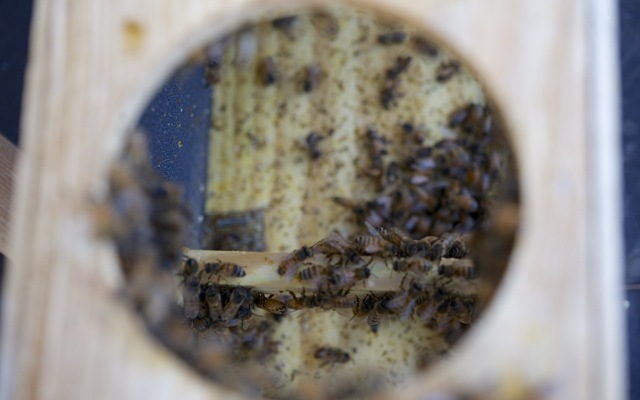
photos by gluttonforlife
We are officially beekeepers! Our friend
Claire procured 3 pounds of highly adaptable Italian honey bees (
Apis mellifera ligustica) for us and we picked them up this weekend. They are now ensconced on our rooftop (out of the reach of bears!) in the hive that was my Christmas present to G. He did much of the research for this project and I am now doing my reading to catch up. Bees are a big responsibility and I want to make sure we give them all the TLC they need. After all, with any luck, next year they'll be giving us some delicious honey.
Another incentive for starting a hive is the desire to support the severely challenged bee population. I'm sure you've heard of the frightening widespread colony collapse. (
This is a great piece on the latest conclusions.) I find it fascinating that
Rudolph Steiner, the German founder of biodynamic agriculture and a precursor of the modern organic movement, predicted in 1923 that artificial industrial techniques used to breed honey bees would lead to the species' collapse within a hundred years. The bee is yet another tragic victim of monoculture industrial agriculture and its rampant use of pesticides and GMOs.
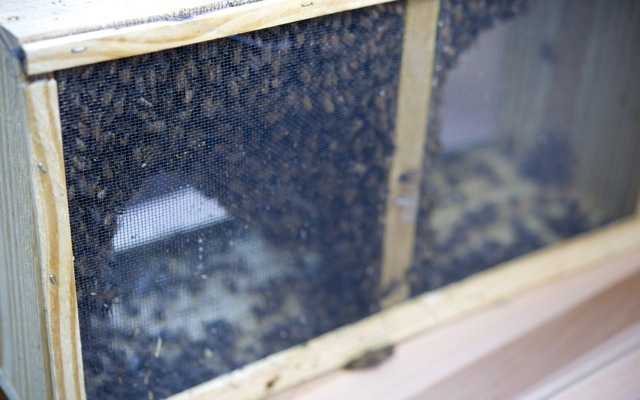
bee suitcase
Our bees came in a screen box! We put them in the back of our car and could hear their intense buzzing the whole way home. When bees get agitated, the decibel level really goes up. I think the transition was a bit stressful for them but they seemed to settle down fairly quickly.
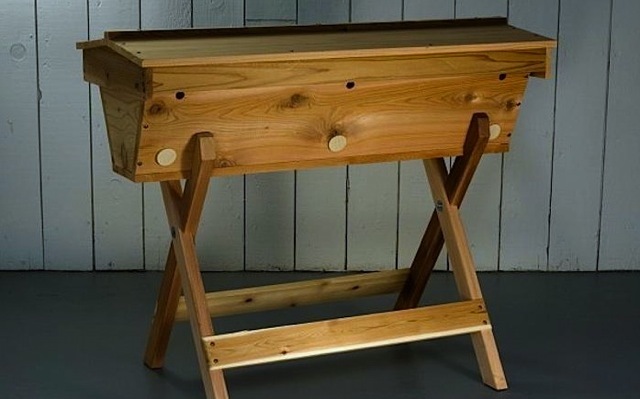
a warré hive
Their new home is a top bar hive. Like the Warré hive, it is distinguished by a lack of frames, so bees build wax combs, without foundation, starting from the top bars. The sides of the combs are then attached to the interior walls of the hive which makes for a healthier, more natural bee environment. I got it at Williams-Sonoma, but this style of hive is available from several online purveyors, and there are even sites that show you how to build your own.
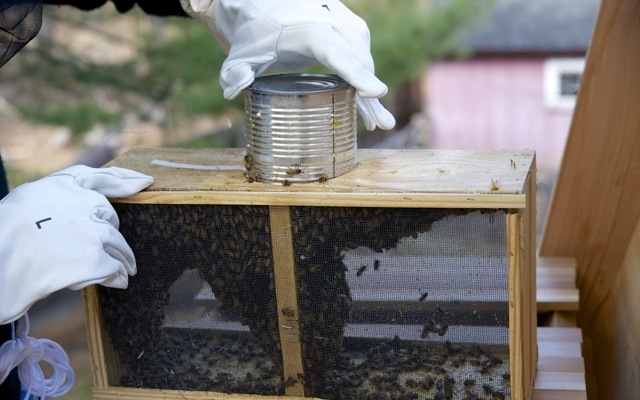
sugar shack
A can of sugar-water was included to provide food for the bees traveling without their own honey. Beekeeper G wore a netted pith helmet and long gloves when handling the bees, but I got quite close to shoot photos without any protection on and it wasn't a problem. It's my sense that bees are not overtly hostile and will only sting you if you are hurting them directly. We had a spray bottle of sugar-water on hand to mist them, which helps calm them down.
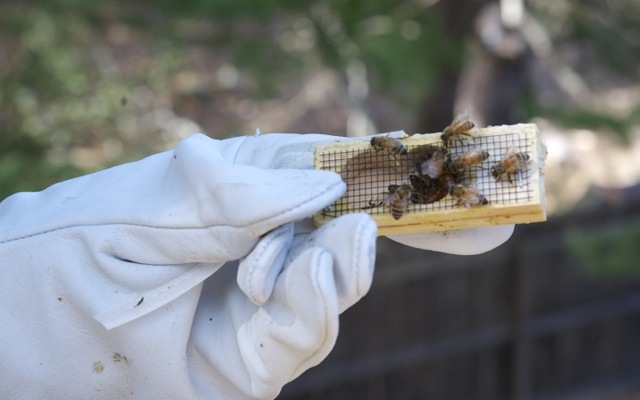
royal treatment
The queen came in her own separate box along with several attendants. The minute she was placed in the hive, the others swarmed around her.
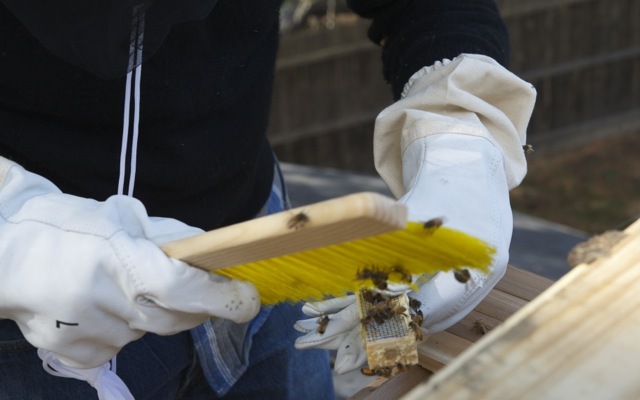
handling with care
We have a big, soft brush that helps gently nudge the bees where you want them to go.

bee careful
Once the queen was placed inside, G basically had to dump the bees from the screen box into the hive. I almost hyperventilated a few times watching (and photographing) this process.
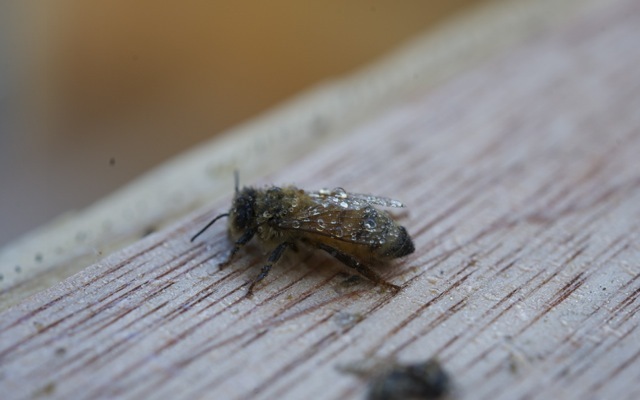
sweet thing
Italian honey bees are slightly smaller and have shorter overhairs than the darker honeybee races. They are quite hardy and are thought to have survived the last Ice Age in Italy. (The one above has droplets of sugar-water on its wings.)
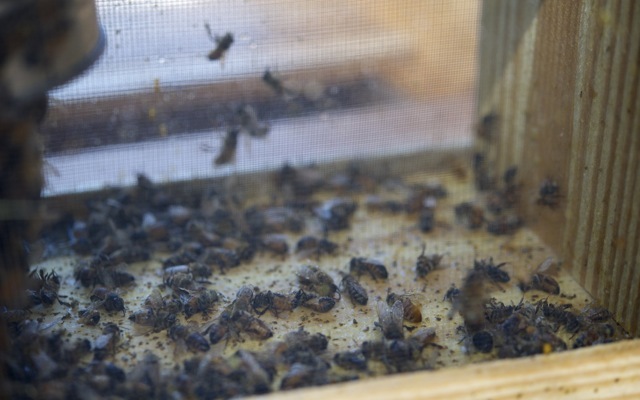
casualties
It was heartbreaking to see the number of dead bees. I was worried about what would happen to them but a day or so later we saw them being ferried out by their surviving bretheren.
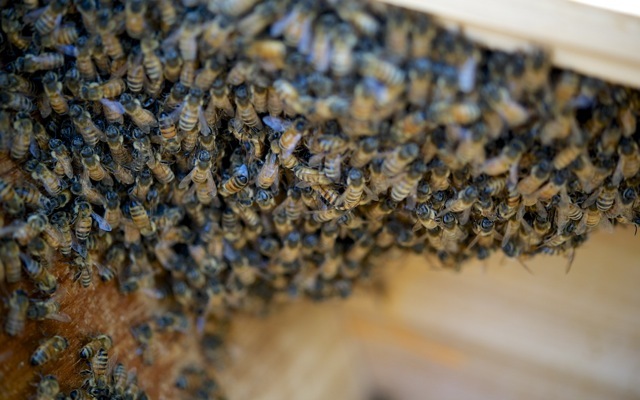
latched on
The remaining mass is huddled around the queen for now. Nothing is yet in bloom in our area, so we continue to feed the bees sugar-water (made from organic sugar, of course!) until there is food to be foraged. They stream in and out during the day, no doubt heading off to investigate their new turf. Soon they will redefine the notion of home, sweet home.
Honey Panna Cotta
serves 4-6
-
— 3 tablespoons granulated gelatin
-
— 1/4 cup cold water
-
— 1 cup heavy cream, divided in half
-
— 1/4 cup honey
-
— 1 1/2 cups buttermilk
In a small bowl, sprinkle the gelatin over the cold water. Allow the mixture to sit for 5 minutes. In a small saucepan set over medium-low heat, warm 1/2 cup of the heavy cream with the honey until the honey dissolves, about 1 minute. Whisk in the bloomed gelatin and allow it to dissolve, about 1 minute. Pour the warm mixture into a medium bowl and set aside to cool slightly, about 5 minutes. Stir the buttermilk into the cream mixture.
In a separate large bowl, whisk the remaining 1/2 cup of cream into soft peaks. Pour a bit of the buttermilk mixture into the whipped cream and gently fold together. Fold the whipped-cream mixture into the rest of the buttermilk mixture. Divide the panna cotta into 4 to 6 small ramekins and refrigerate for 4 to 6 hours. Serve cool.
 Download Recipe
Download Recipe










 Download Recipe
Download Recipe






9 Comments